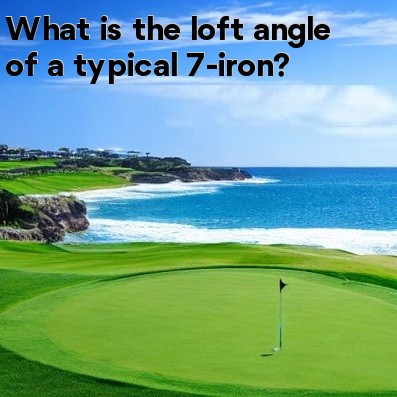
In golf, What is the loft angle of a typical 7-iron?
When it comes to golf clubs, the loft angle plays a crucial role in determining the trajectory and distance of the shot. Each club in a golfer's bag has a unique loft angle, which refers to the angle between the face of the club and the vertical plane. The loft angle greatly affects the trajectory and distance of the shot, with lower loft angles resulting in lower shots and higher loft angles resulting in higher shots.
One of the most commonly used irons in a golfer's bag is the 7-iron. The 7-iron falls in the mid-iron category and is known for its versatility and ability to hit shots from various distances and lies on the golf course.
The loft angle of a typical 7-iron is around 34 to 38 degrees. This loft angle allows golfers to achieve a balance between distance and control, making the 7-iron a popular choice for many golfers from the fairway or rough.
The loft angle of a club directly affects the trajectory and distance of the shot. A higher loft angle generates more backspin on the golf ball, resulting in a higher flight and a steeper descent. On the other hand, a lower loft angle produces less backspin, leading to a lower flight trajectory. The loft angle of a 7-iron is designed to provide an optimal balance between distance, control, and trajectory.
Nowadays, with advancements in golf club technology, golfers have access to clubs with adjustable loft angles. This allows the golfer to fine-tune their clubs based on course conditions, personal preferences, and desired shot shapes. Adjustable loft angles provide golfers with the flexibility to adapt to different situations on the course and optimize their performance.
It is important to note that the loft angle of a 7-iron can vary slightly depending on the club manufacturer and model. Golf club manufacturers often make slight adjustments to the loft angle to cater to the diverse preferences and skill levels of golfers. Therefore, it is recommended that golfers consult the specifications provided by the club manufacturer for accurate loft angle information specific to their 7-iron.
- A typical 7-iron has a loft angle ranging from 34 to 38 degrees.
- The loft angle affects the trajectory and distance of the shot.
- Higher loft angles generate more backspin and result in a higher flight.
- Lower loft angles produce less backspin and result in a lower flight.
- Golfers now have access to clubs with adjustable loft angles to fine-tune their shots.
- Consult the club manufacturer's specifications for accurate loft angle information specific to your 7-iron.
Knowing the loft angle of your golf clubs is essential in understanding how they will perform on the course. The loft angle of a typical 7-iron falls within a specific range, providing golfers with a versatile club that can be used for various distances and lies. Experimenting with different loft angles and understanding their impact on your shot can help you become a more skillful golfer.





